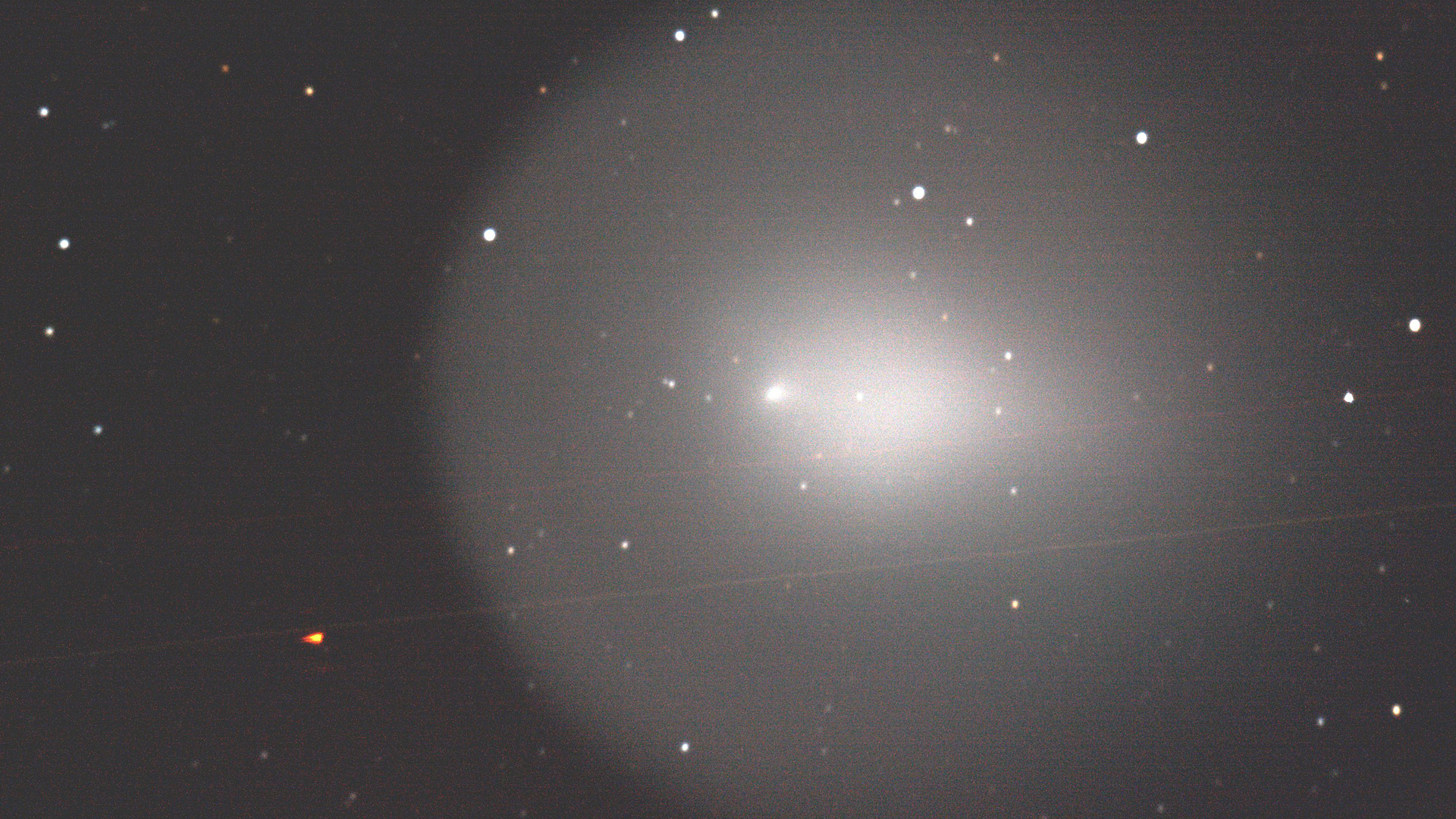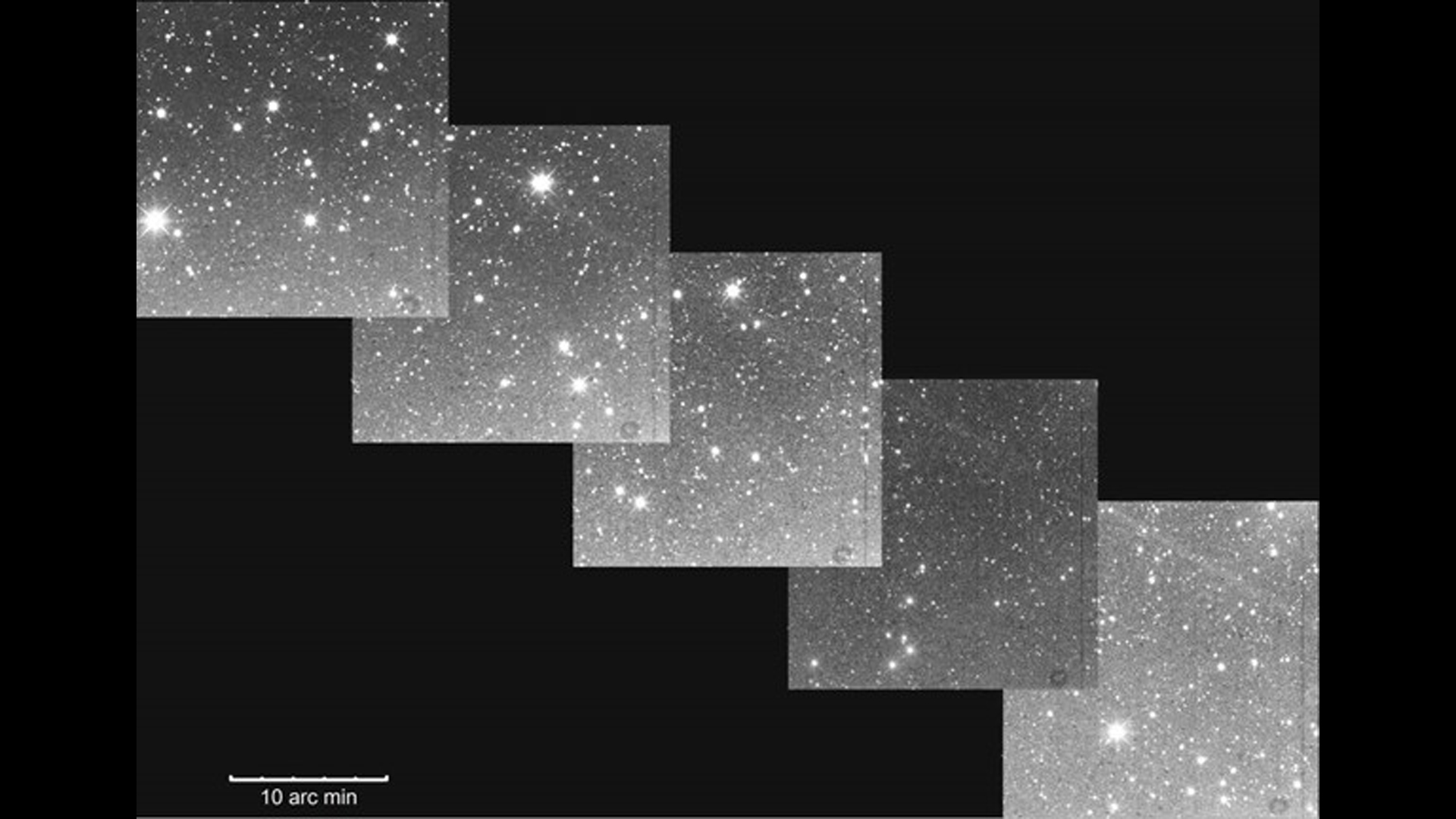Skywatchers can see debris from spectacular comet outburst this month
Telescopes of at least 11-inch (30 centimeters) aperture fitted with CCD cameras should be able spot the trails.

In October 2007, the otherwise underwhelming comet known as 17P/Holmes produced the most spectacular cometary outburst ever observed. Debris from this event will be visible this month to amateur telescopes in the Northern Hemisphere. Here is when and how to look for it.
Finnish astronomer Markku Nissinen remembers the days almost 15 years ago when skywatchers first noticed the intense brightening of the 2.1-mile-wide (3.4 kilometers) comet. Within days, the envelope of dust and gas surrounding the icy object, known as 17P/Holmes, was as wide as the sun, the comet's brightness having increased a million times.
"We didn't know what happened at that time," Nissinen told Space.com. "It was really quite astonishing. Really surprising how it expanded. I have never seen anything like that since."
17P/Holmes has fascinated Nissinen ever since.
Related: The massive, strange Comet K2 is touring the solar system, surprising scientists as it goes
"This comet is a Jupiter family comet, but it's different from all the other Jupiter family comets we have seen," said Nissinen. "In known history, this comet has produced three such [powerful] outbursts. None of the other Jupiter family comets has ever done this. There is something rather different about this one."
There are about 600 known Jupiter family comets, ice rocks that follow elliptical orbits around the sun with their farthest points between the orbits of Mars and Jupiter. According to Swinburne University in Australia, Jupiter family comets tend to be rather faint as they visit the central solar system every 20 years or more. In the vicinity of the sun, the comets heat up and deplete the volatile compounds that are responsible for the creation of their bright cometary tails.
Get the Space.com Newsletter
Breaking space news, the latest updates on rocket launches, skywatching events and more!
Astronomers don't know what drove 17P/Holmes' unusual outburst in 2007, but they hope that observing the cloud of dust and meteoroids the event produced could shed some light on that mystery.

Earlier this year, Nissinen and Maria Gritsevich, a planetary scientist at the University of Helsinki in Finland, published a study that analyzed the trail of this cometary debris and determined its trajectory through space.
They found that this trail of dust and micro-meteoroids will be visible this summer even with amateur telescopes, and they are now encouraging skywatchers to turn their lenses toward the trail to help improve the understanding of the puzzling comet.
Earth will be crossing the orbital plane of the debris trail in mid-August, they said, but skywatchers will have to wait until after the full moon on August 11, as the moon's light will outshine the dust.
Amateur astronomers with telescopes of at least 11-inch (30 centimeters) aperture fitted with CCD cameras should be able to spot the trails with a bit of technical skill, said Gritsevitch, adding that skywatchers should focus on the trails on two subsequent nights and then subtract the images to get rid of any noise.
"Most amateur astronomers can do it now," she told Space.com. "People these days have advanced observational systems, and they know how to do image subtraction, so it's relatively easy."
Richard Miles, a British amateur astronomer who heads the Asteroids and Remote Planets Section of the British Astronomical Association, told Space.com in an email that the best time to try one's luck at catching the trail would be after Aug. 22, when the moon sufficiently wanes.
"Sensitive cameras and fast focal ratio optics are required to detect the dust trail seen side-on as the Earth passes through the plane of 17P/Holmes' orbit," Miles wrote. "The surface brightness of the dust trail is extremely low at probably < 25 magnitude per square arcsecond of sky, which in a normal dark sky is only a few percent brighter than the background sky."
Gritsevich and Nissinen published an update of their calculations as a paper to be presented at the Europlanet Science Congress in September. You can read the paper here, including detailed coordinates about where to look for the trails.
Follow Tereza Pultarova on Twitter @TerezaPultarova. Follow us on Twitter @Spacedotcom and on Facebook.
Join our Space Forums to keep talking space on the latest missions, night sky and more! And if you have a news tip, correction or comment, let us know at: community@space.com.

Tereza is a London-based science and technology journalist, aspiring fiction writer and amateur gymnast. Originally from Prague, the Czech Republic, she spent the first seven years of her career working as a reporter, script-writer and presenter for various TV programmes of the Czech Public Service Television. She later took a career break to pursue further education and added a Master's in Science from the International Space University, France, to her Bachelor's in Journalism and Master's in Cultural Anthropology from Prague's Charles University. She worked as a reporter at the Engineering and Technology magazine, freelanced for a range of publications including Live Science, Space.com, Professional Engineering, Via Satellite and Space News and served as a maternity cover science editor at the European Space Agency.









